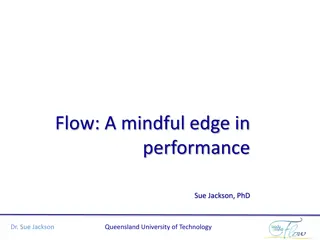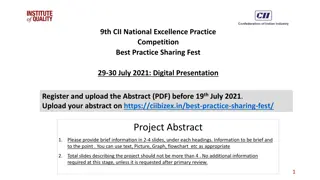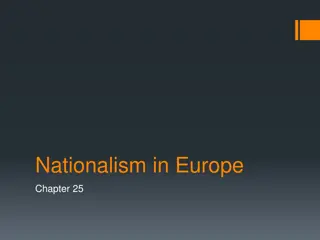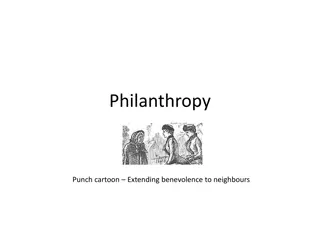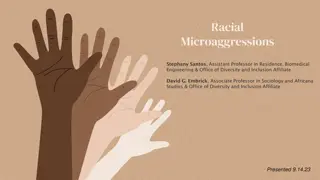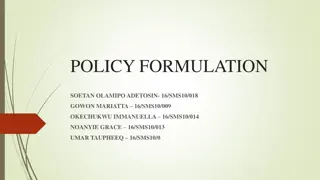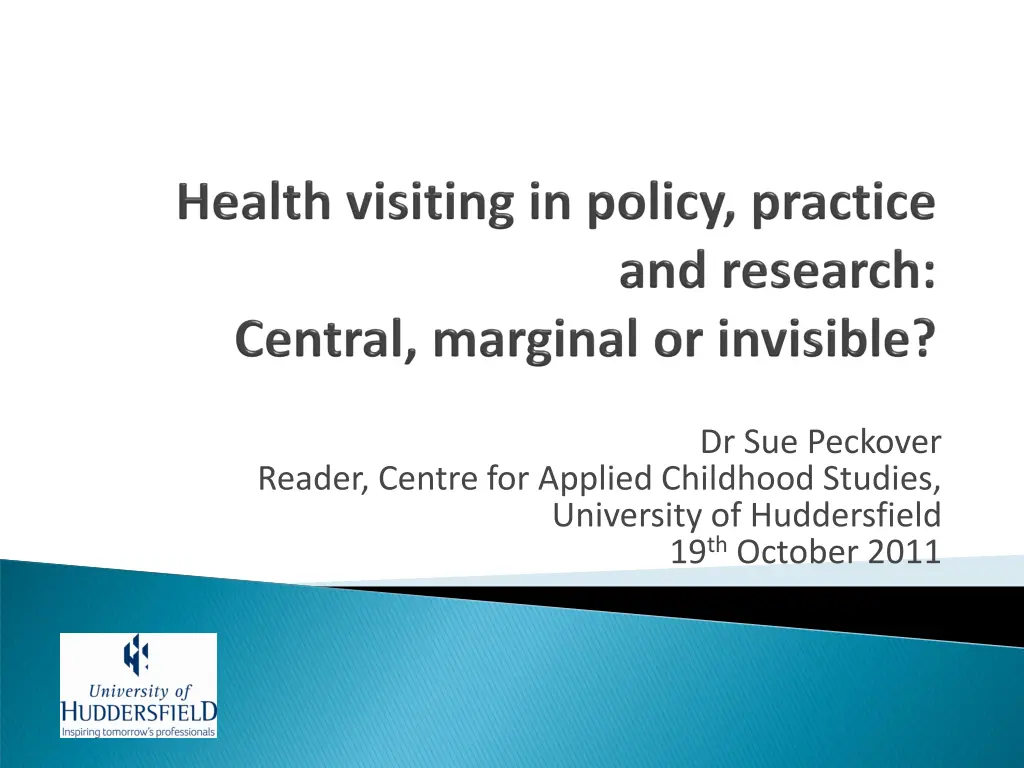
Understanding the Role of Health Visitors in Public Health
Explore the historical context and current significance of health visiting in public health, emphasizing child welfare and protection, in this insightful study by Dr. Sue Peckover from the University of Huddersfield.
Download Presentation

Please find below an Image/Link to download the presentation.
The content on the website is provided AS IS for your information and personal use only. It may not be sold, licensed, or shared on other websites without obtaining consent from the author. If you encounter any issues during the download, it is possible that the publisher has removed the file from their server.
You are allowed to download the files provided on this website for personal or commercial use, subject to the condition that they are used lawfully. All files are the property of their respective owners.
The content on the website is provided AS IS for your information and personal use only. It may not be sold, licensed, or shared on other websites without obtaining consent from the author.
E N D
Presentation Transcript
Dr Sue Peckover Reader, Centre for Applied Childhood Studies, University of Huddersfield 19thOctober 2011
Health visiting: important role in delivering services to children & families often less visible in debates than other groups - social work narrative of professional uncertainty BUT survival and revival This paper: how health visiting is understood and located in policy, practice, and research Thoughts - rather than answers
History and context for HV is public health work: Long history 19thcentury roots Focused on mothers and children Shaped professional identity and orientation Contemporary context: Children s public health - importance of early years Health inequalities and population changes New risks obesity, domestic violence Emphasis on needs assessment
Long history of working with families where children are vulnerable and at risk of harm Less visible Largely avoided public or media scrutiny - child deaths/serious incidents despite high incidence in infants and under 5s universality of health visiting
In the last decade, there has been a dearth of research or papers commenting on the child protection functions of health visitors. This silence on the subject runs counter to the experience of most practising health visitors whose daily work is still taken up with much child welfare work. However, it reflects the official rhetoric, which is that child protection duties are primarily the concern of social, not health, services (Cowley et al 2004, p. 506).
Contemporary Context: Expansive safeguarding children agenda (ECM) early intervention, multi-agency working & information sharing outcome based broad risks and needs Post-Laming: HV contribution to safeguarding and protecting children affirmed Child maltreatment - a public health issue (see Gilbert et al 2009)
Policies coincide (public health & safeguarding children) How will various demands impact upon service delivery at practice level?: target service provision within a universal framework broader risks and emphasis on early intervention concerns about workforce numbers and fiscal restraints importance of professional judgement and relationship based nature of HV - limited professional contact
Public health work in practice? Role identity/orientation: policing? mothers friend? Places and spaces of HV work invisible, mobile , gendered Multiple: homes, health centres, community settings, offices Largely outside public view: often private domain of home and family Mobile: travelling between places Gendered: Largely women workers and mediated through mothers - until recently largely invisible within policy discourses Changing/unstable: spatial and organisational reconfigurations. HVs located in clinics, GP surgeries and Children s Centres co-located with other professionals social workers, nursery nurses etc
Relatively weak position within academic world Caught between various disciplines: nursing, medicine, social work Focus upon health - an abstract , diverse and socially constructed concept Struggle to establish HV as a discrete discipline underpinned by a scholarly body of work Limited foothold in universities particularly at professorial level
Small scale largely qualitative studies of professional practice - often individual researchers with HV background Few focused research studies or trials No coherent programme of research about health visiting Drive to demonstrate evidence based practice - difficulties for attributing outcomes to health visiting involvement Lack of alternative scholarships Ferguson time and mobilities/space in social work Postmodernism - health and welfare studies
Tensions in how HV is located and understood in policy, practice and research A strength? Enabling HV profession to adapt in response to policy and practice developments HV always meets a central policy objective? Child protection/early intervention/public health this may shift Celebrate survival (and revival) of health visiting
Dr Sue Peckover S.Peckover@hud.ac.uk Peckover S. (2011). From public health to safeguarding children: British health visiting in policy, practice and research. Children and Society. Article first published online: 27 APR 2011 | DOI: 10.1111/j.1099-0860.2011.00370.x


